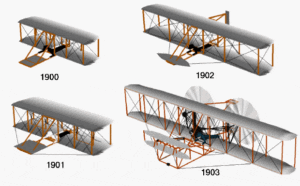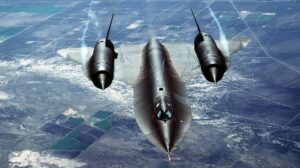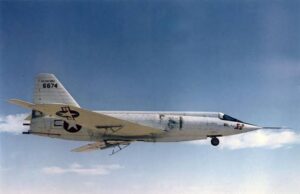The concept of speed has always fascinated humans. It represents the rate at which an object can move and is measured as the distance traveled per unit of time. Over the years, scientists and engineers have constantly pushed the boundaries of what is considered fast, achieving incredible speeds that were once thought to be impossible. However, the question arises: what is the fastest possible speed?
 Pin
Pin The year 1903 is not such a long time ago. But many people are not alive now though who were living then. But the changes that have occurred in these many years are very great indeed.
One of the biggest changes has been in the speed of aircraft. On this post, is shown some of the outstanding aircraft that were the fastest in the world in their time.
Strangely, the story ends in 1969 — but more of that later.
The beginning of it all was the biplane designed by the Wright brothers in America. It was capable of the then impressive speed of 48 km/h.
After the Wrights’ initial triumph, much of the development of the aeroplane took place in Europe, particularly in France. This development was speeded up by World War I in which the aeroplane was used as a weapon for the first time.
 Pin
Pin After the war, Jacques Schneider, a French Engineer, started the sporting event ‘The Schneider Trophy Races’ for the speed and seaworthiness of sea planes. This event was mostly responsible for shaping the future of aircraft design. The event was for sea planes, and was won for the third time in succession by Britain in 1931, thus entitling Britain to retain the Trophy for all time.
The machine that won the 1931 race, the Supermarine S.6B, went onto set a new world speed record of 668 km/h.
But other countries were not out of the race for greater speed. Developed on similar lines to the S.6B, an Italian aircraft —the Macchi M.67 —raised the record to 708 km/h in 1934.
The Supermarine S.6 was designed by R. J. Mitchell. He used his experience to good effect when he ultimately designed the Spitfire, which was so well streamlined and efficient that, despite its wing span of 11 metres and a large powerful Rolls-Royce engine in front, its drag, or air resistance, was equivalent to that of a steel plate only 45 cm in diameter.
 Pin
Pin The next significant development of the aeroplane came with jet propulsion, which raised the speeds of aircraft by over 200 km/h. A jet aircraft — the de Havilland D. H. 108 — broke the ‘sound barrier’ (that is, it went faster than the speed of sound, 1,225 km/h) in 1948. But over the years jets got faster and faster.
The ‘official’ world airspeed record of 3,529.56 km/h is held by a jet, the American Lockheed company’s SR-71A ‘Blackbird’ (see below). This record was set back in 1976 and has not been bettered since. Is Man slowing down in the race to go faster?
 Pin
Pin Not exactly. For a start, rockets do not qualify for the official airspeed record and all faster aircraft have been rocket-powered. In fact, the rocket-powered Bell XS-1 broke the sound barrier before the de Havilland D.H. 108, in October 1947.
While developing their space programme during the 1960s, the Americans produced an experimental rocket aircraft, the X15. This achieved a speed of 7,297 km/h in 1967.
But this sort of speed is of little value in normal day-to-day or even military aircraft — which is why aeroplane speeds have not increased since the SR-71A. How pointless these great speeds are is shown by what happened when the SR-71 (an earlier version of the SR-71A) broke the record for the quickest Atlantic crossing in September 1974, travelling at an average speed of 2,924 km/h. The cross-Atlantic flight, New York to London, took just 1 hour 56 minutes — but the plane was travelling so fast it could not land.
It had to overshoot not only the runway but Britain! It had travelled all the way to Amsterdam before it was going slow enough to turn round and come back to land.
 Pin
Pin  Pin
Pin Lockheed SR-71 Blackbird Video:
So much greater speeds for aeroplanes are of no value. The X15 was developed for another reason — so that rockets could be made fast enough to break away from the Earth’s gravity and travel out into space.
It is in space that Man has reached his greatest speed. On the way back from orbiting the Moon in 1969, Apollo 10 reached 39,897 km/h. To the Moon its the farthest and fastest that Man has gone.
But if Man voyages to distant planets, or even stars, even greater speeds will be needed so that he can travel across the vast distances.
Yet Man can’t keep going faster and faster. Unlike the sound barrier, the ‘light’ barrier cannot be beaten. The speed of light — 299,792,500,000 km/s — is the ultimate, the fastest possible, speed in the Universe. When — and if — Man reaches it, he will have to be content. The story of going faster will have reached its end.
The Lockheed SR-71A (Blackbird) is the fastest plane in the world — official. It holds the airspeed record of 3,529,56 km/h, although it can reputedly go faster — the Americans keeping something in reserve so that the true capabilities of the plane would not be known.
Blackbird needs its great speed for its role as a reconnaissance aircraft. It carries no weapons and is designed to outfly any attacker. Such great speeds are of little value to other planes — manoeuvrability is of far greater importance.
In classical physics, the speed of light, denoted as ‘c,’ is considered to be the ultimate cosmic speed limit. It is approximately 299,792 kilometers per second or roughly 186,282 miles per second. According to Albert Einstein’s theory of relativity, no object with mass can reach or exceed the speed of light. As an object accelerates, it gains mass, requiring increasingly more energy to continue accelerating.
This limitation poses a significant hurdle for space travel and the exploration of distant galaxies. As humans venture beyond our solar system, the vast distances involved make it apparent that we need to find ways to travel at greater speeds to make interstellar travel a possibility. Presently, our most advanced spacecraft can achieve significant speeds, reaching up to 40,000 kilometers per hour (25,000 miles per hour). However, even at these speeds, it would take hundreds or thousands of years to reach even the nearest star systems.
To overcome these limitations, scientists have explored concepts like warp drives, wormholes, and theoretical particles called tachyons that could potentially exceed the speed of light. However, these ideas remain purely speculative and reside within the realm of science fiction. Practical applications are yet to be discovered or developed.
It is worth noting that recent breakthroughs in physics have also challenged our understanding of speed. For instance, the discovery of neutrinos appearing to move faster than light was initially met with excitement and intense scientific scrutiny. However, subsequent experiments debunked these findings, reinforcing the supremacy of the speed of light as an unattainable limit.
For the foreseeable future, the speed of light remains the fastest speed known to mankind. It is the ultimate barrier preventing us from exploring distant reaches of the universe within a human lifetime. While our understanding of physics and technology may evolve in the future, unlocking new possibilities, the concept of the fastest possible speed seems to be intimately tied to the fundamental nature of our universe.
The current fastest possible speed achievable by humans on Earth is the speed of sound, which is approximately 343 meters per second or 1,236 kilometers per hour at sea level. This speed is known as Mach 1.
There are several factors that limit us from reaching higher speeds:
1. Physiological Limitations: The human body is not designed to withstand extreme speeds. As we approach the speed of sound, the air resistance creates immense drag on the body, potentially causing injuries or even death. Additionally, the acceleration forces experienced at higher speeds can lead to physical damage and loss of consciousness.
2. Air Resistance: As we move through the air, drag increases exponentially with speed. Air resistance, also known as drag, makes it progressively harder to go faster. The faster an object moves, the more energy it requires to overcome the resistance caused by the air’s molecules pushing against it. Ultimately, air resistance becomes overwhelming and makes it difficult to achieve higher speeds.
3. Energy Requirements: The amount of energy needed to accelerate a human body to extremely high speeds becomes impractical. It would require a tremendous amount of energy and propulsion systems that are currently beyond our technological capabilities.
4. Technology Limitations: Despite advancements in technology, our current transportation systems, such as aircraft and vehicles, have limitations in terms of power and structural integrity. Building vehicles that can withstand the forces at extreme speeds is a significant challenge.
It is important to note that there have been experiments and attempts to break the sound barrier with specialized vehicles like supersonic aircraft, but these are exceptions and not something an average human can achieve.
 Pin
Pin The fastest possible speed of planes is determined by a combination of factors, including aerodynamics, engine power, and materials used in construction.
The current record for the fastest speed ever achieved by an aircraft is held by NASA’s X-43 scramjet, which reached a staggering speed of Mach 9.6 (approximately 7,346 miles per hour or 11,775 kilometers per hour) in 2004. This experimental unmanned aircraft utilized a scramjet engine, which is an air-breathing engine that uses engine-produced shock waves to compress incoming air before combustion. The X-43 demonstrated the potential for hypersonic flight and paved the way for future developments in aircraft technology.
However, the operational planes that are commercially available to the public have significantly lower maximum speeds. The fastest passenger airliner in service today is the supersonic Concorde, which flew at a maximum speed of Mach 2.04 (around 1,354 miles per hour or 2,180 kilometers per hour). It operated from 1976 to 2003 and bridged the Atlantic Ocean in less than half the time it took conventional subsonic aircraft.
Various military aircraft are capable of surpassing the speed of sound. The military’s most advanced fighter jet, the Lockheed Martin F-35 Lightning II, has a top speed of around Mach 1.6 (approximately 1,200 miles per hour or 1,930 kilometers per hour). Similarly, the Russian Sukhoi Su-57 and Chinese Chengdu J-20 stealth fighters are capable of supercruise, which allows sustained supersonic flight without the need for afterburners.
The speed of an aircraft is limited by several engineering challenges. As an object approaches the speed of sound (known as Mach 1), it encounters increased air resistance and undergoes a phenomenon known as transonic drag rise. Beyond Mach 1, aircraft must also contend with the effects of shock waves and their associated drag. These factors require significant power and design considerations to overcome.
Another important limitation is the materials used in constructing the aircraft. As an aircraft approaches and exceeds the speed of sound, it generates intense heat due to air compression. The high temperatures can affect the structural integrity of conventional materials, limiting the maximum speed achievable. Advancements in materials science and engineering are continuously being explored to overcome these challenges and push the boundaries of aircraft speed.
In conclusion, the fastest possible speed of planes is currently limited to hypersonic technology, and the X-43 holds the record with its remarkable Mach 9.6 achievement. However, operational passenger planes have significantly lower maximum speeds, with the Concorde’s Mach 2.04 setting the bar for commercial supersonic flight.
Military aircraft like the F-35 Lightning II, Su-57, and J-20 are designed to operate at supersonic speeds but remain below the hypersonic realm. Achieving faster speeds requires overcoming factors such as transonic drag rise, shock waves, and thermal limitations, which necessitate innovations in aerodynamics, engine power, and materials.
Era of Planes
 Pin
Pin  Pin
Pin  Pin
Pin  Pin
Pin  Pin
Pin  Pin
Pin  Pin
Pin  Pin
Pin 

 Pin
Pin  Pin
Pin  Pin
Pin  Pin
Pin Frequently Asked Questions : Fastest possible speed
The fastest possible speed a plane can reach largely depends on the type of aircraft. Some of the fastest commercial passenger planes, like the Boeing 747 or the Airbus A380, achieve cruising speeds of around 560–570 miles per hour (900–920 kilometers per hour). However, military aircraft, such as fighter jets, can reach even higher speeds.
The fastest speed ever recorded by an aircraft was achieved by the NASA X-43, an unmanned experimental aircraft. On November 16, 2004, the X-43 reached a staggering speed of approximately Mach 9.6, which is equal to around 7,346 miles per hour (11,780 kilometers per hour) or 10 times the speed of sound. This record-setting speed was achieved using a scramjet engine, a type of air-breathing jet engine.
Mach speed is a term used to describe the ratio of the speed of an object to the speed of sound in the medium through which it is traveling. Mach 1 is equal to the speed of sound, varying with temperature and altitude, which is approximately 767 miles per hour (1,235 kilometers per hour) at sea level and 59°F (15°C). Thus, Mach 2 is twice the speed of sound, and so on.
Several factors influence the top speed of an aircraft. These include the engine power and efficiency, the aerodynamic design of the aircraft, the weight, altitude, and temperature of the atmosphere. Engine power and efficiency are key, as a more powerful and efficient engine can propel the plane at higher speeds. Aerodynamic design reduces drag and resistance, enabling the aircraft to achieve faster speeds. Additionally, at higher altitudes, where the air density is lower, planes encounter less drag and can achieve higher speeds.
Yes, there are limitations to how fast a plane can fly. One crucial factor is the speed of sound, also known as the sound barrier. As an aircraft approaches and exceeds the speed of sound (~767 mph or ~1,235 km/h), it encounters a sudden increase in air resistance, resulting in a phenomenon called “supersonic drag.” At these speeds, air molecules cannot move out of the way quickly enough, creating compression waves that generate a shockwave. This shockwave produces sonic booms, which pose risks, including structural damage to aircraft and disturbance to people on the ground.
Yes, there are aircraft capable of flying faster than the speed of sound. These supersonic aircraft include military jets like the famous Concorde, which was retired in 2003, and the still-in-development Boom Overture. However, it is important to note that supersonic flights over land are currently prohibited due to the loud sonic boom generated, although efforts are being made to mitigate the noise.
No, it is currently impossible for any object with mass, including planes or even spacecraft, to reach or exceed the speed of light, which is approximately 670,616,629 miles per hour (299,792,458 meters per second) in a vacuum. According to Albert Einstein’s theory of relativity, as an object approaches the speed of light, its mass would theoretically become infinite, requiring infinite energy to continue accelerating.
Yes, there are ongoing efforts to develop even faster planes. Currently, several organizations and private companies are researching and working on the development of hypersonic aircraft, which can fly at speeds above Mach 5. These hypersonic planes could potentially revolutionize long-distance travel by allowing passengers to reach their destinations in significantly reduced timeframes. However, the technology is still being perfected and faces numerous challenges before becoming a regular mode of transportation.


































Very nice information ☺️
🛫🛩️🛫